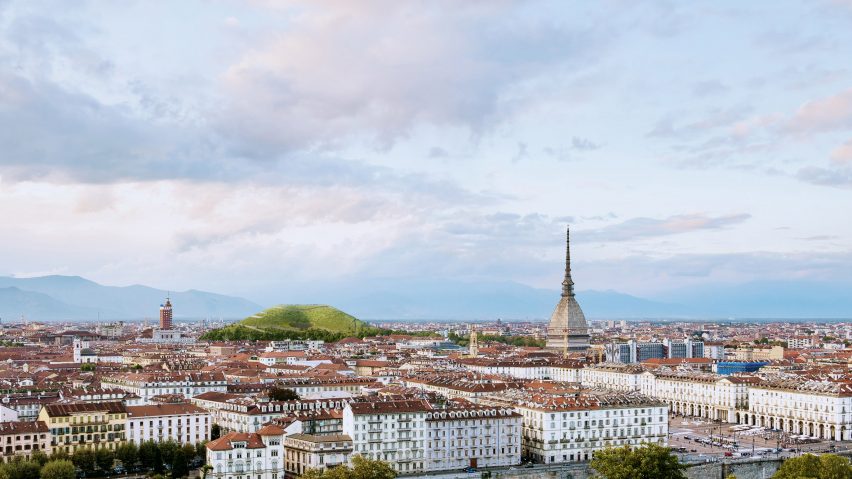
Artificial mountain made of soil could soak up pollution in Turin
Sponge Mountain is a proposal by architect Angelo Renna for a 90-metre-high mound of soil, which would absorb carbon dioxide from the air in Turin.
Amsterdam-based Renna imagines the artificial mountain being made out of the soil excavated during the construction of a 170-mile railway tunnel, planned between the northern Italian city and Lyon, France.
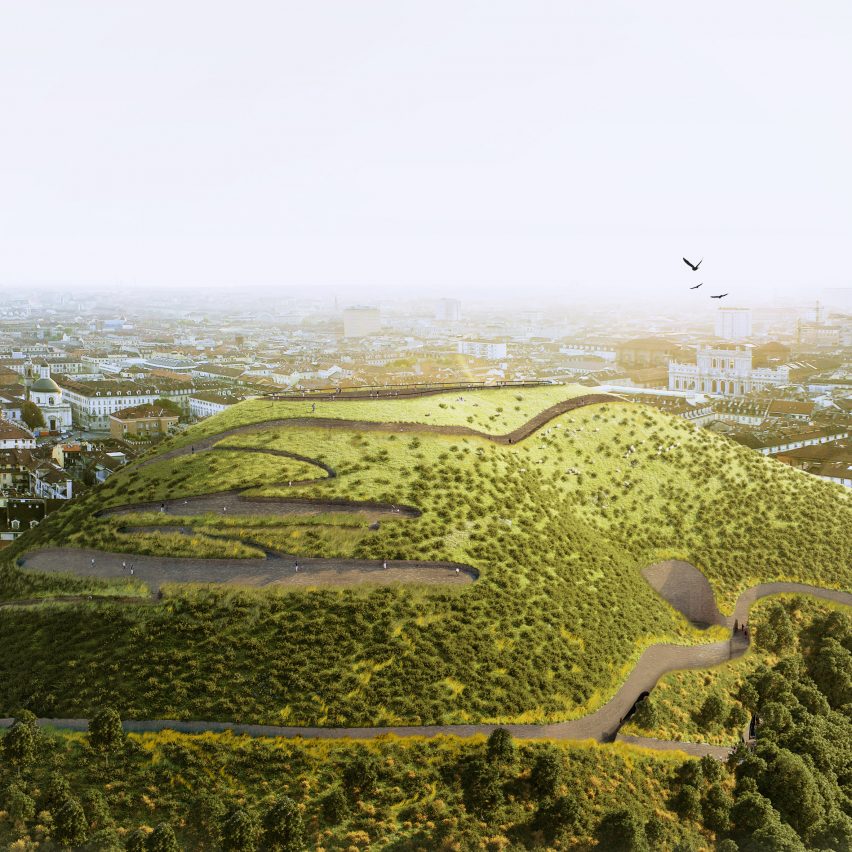
It would passively soak up the carbon dioxide being released into the atmosphere by industry and traffic, locking it into the soil so that it no longer contributes to climate change.
Turin's residents would also be able to enjoy it, as it could be planted with trees and have pathways cut into it, to transform it into a city park.
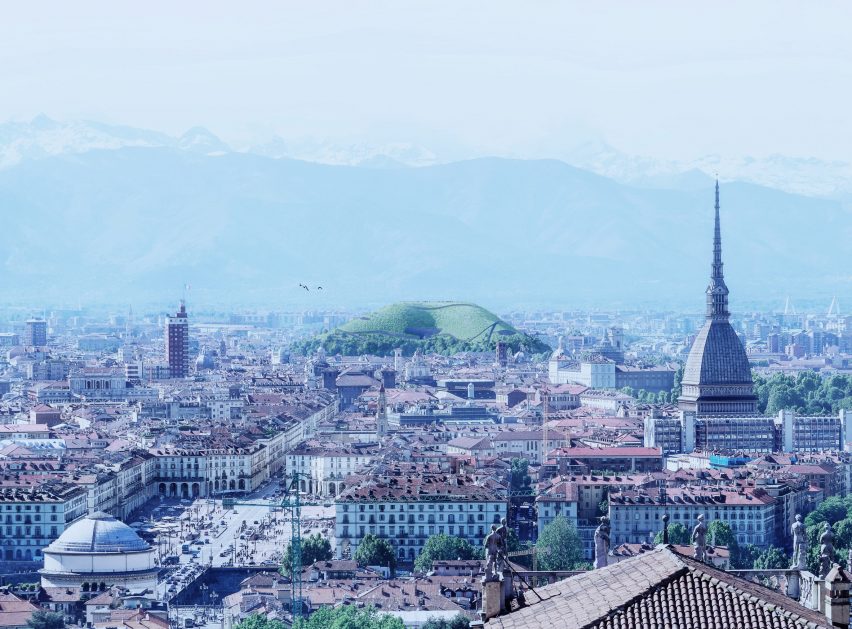
Renna developed the concept for SUCCESS, a project run by the UK Engineering and Physical Sciences Research Council (EPSRC) funding research into the potential of using soil for carbon capture.
Geoscientists, engineers and ecologists are working with designers to investigate the ways in which soil could be optimised to absorb carbon dioxide in urban environments via a process known as carbon capture and storage (CCS).
An estimated six million tons of soil is expected to be removed during construction of the railway tunnel. According to the research from SUCCESS, this kind of quarried soil has a high capacity for capturing carbon dioxide.
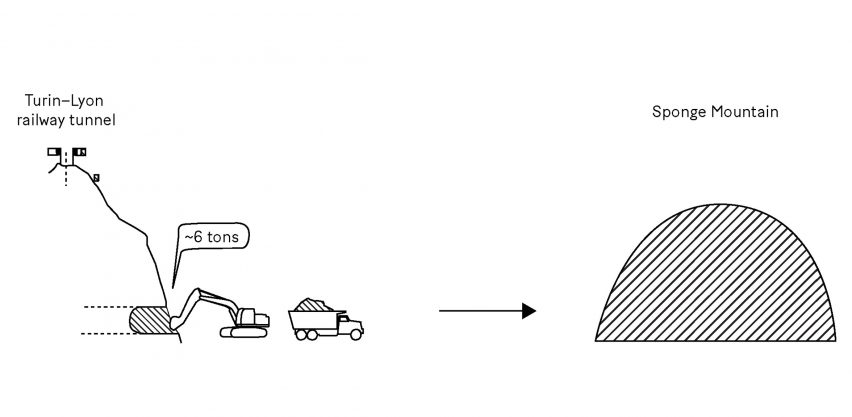
Turin is already one of the most polluted cities in Europe. According to a recent World Health Organisation report, the city's air has a particulate matter concentration of 39 micrograms of per cubic metre.
The pollution is made worse by Turin's geographic location in the Po Valley, trapping the air above the city. Previous attempts to curb air pollution include introducing temporary traffic bans.
"The 90-metres-high Sponge Mountain will be able to absorb the CO2 from the atmosphere," said Renna.
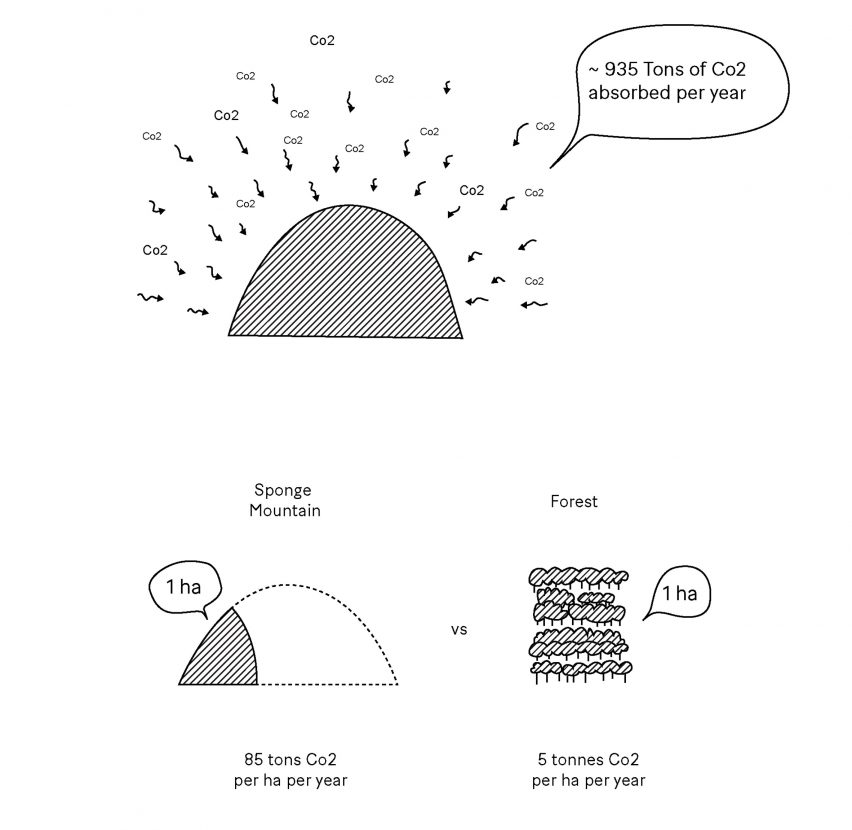
Carbon-capture projects such as Sponge Mountain are one of many geoengineering projects that scientists and designers are looking to in order to solve the problems presented by the anthropocene – the name given to the era we currently live in, where humans have the single biggest impact on the planet's environment and climate.
The United Nations has set a deadline of 12 years for countries to take action against climate change or risk global disaster.
Examples of geoengineering solutions include pumping gases into the stratosphere to mimic the cooling effect of a volcanic eruption, and painting roofs white in order to reflect sunlight.